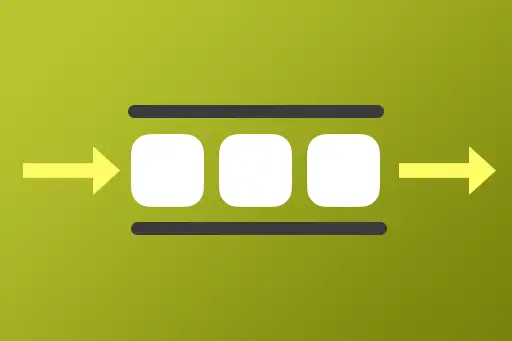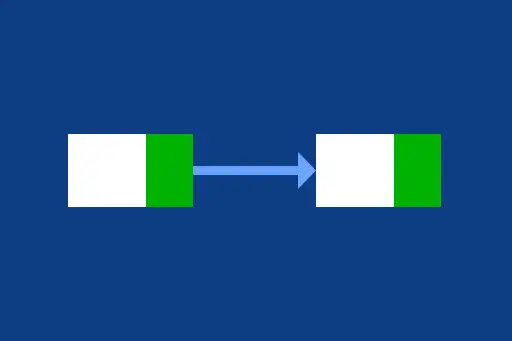- 1Singly Linked List Introduction
- 2Singly Linked List – Create Operation
- 3Singly Linked List – Insert Operation
- 4Singly Linked List – Delete Operation
- 5Singly Linked List – Traversal Operation
- 6Singly Linked List – Search Operation
- 7Singly Linked List – Get Length Operation
- 8Singly Linked List – Reverse Operation
- 9Doubly Linked List Introduction
- 10Doubly Linked List – Create Operation
- 11Doubly Linked List – Insert Operation
- 12Doubly Linked List – Delete Operation
- 13Doubly Linked List – Traversal Operation
- 14Doubly Linked List – Search Operation
- 15Doubly Linked List – Get Length Operation
- 16Doubly Linked List – Reverse Operation
Doubly Linked List – Reverse Operation
Visualization Player
Reverse Operation in Doubly Linked List
Reversing a doubly linked list so that the last node becomes the new head, and both next and prev pointers are swapped for every node.
In a doubly linked list, reversing is simpler compared to a singly linked list because each node has both next and prev pointers.
The reversal process involves traversing the list and swapping the next and prev pointers of each node. Finally, the head pointer is updated to point to the new head (previously the tail).
Visual Example
Suppose we have the following doubly linked list:
We want to reverse the list so that the order becomes 50 ⇄ 40 ⇄ 30 ⇄ 20 ⇄ 10.
Step-by-Step Reversal
- Start with
current = head (10). - Step 1:
current = 10
Swapprevandnextpointers. Move tocurrent.prev (was next). - Step 2:
current = 20
Swapprevandnext, move tocurrent.prev. - Step 3:
current = 30
Swap pointers and move tocurrent.prev. - Step 4:
current = 40
Swap pointers and move tocurrent.prev. - Step 5:
current = 50
Swap pointers and nowcurrent.prev = null. This is the new head.
At the end, current becomes null, and the last non-null node (which was the tail) is now the new head. Return this node as the head of the reversed list.
Complete Pseudocode: Reverse a Doubly Linked List
This pseudocode shows how to reverse a doubly linked list in-place by swapping the next and prev pointers of each node.
function reverse(head):
curr = head
temp = null
while curr != null:
temp = curr.prev
curr.prev = curr.next
curr.next = temp
curr = curr.prev
if temp != null:
head = temp.prev
return headLet’s understand each part of the code step by step.
function reverse(head):
curr = head
temp = nullExplanation: We use curr to traverse the list and temp to help with swapping. Initially, we start from the head of the list.
while curr != null:
temp = curr.prev
curr.prev = curr.next
curr.next = temp
curr = curr.prevExplanation: For each node, we swap the prev and next pointers. Then we move curr to its new prev, which was originally next.
if temp != null:
head = temp.prev
return headExplanation: After the loop, temp holds the last processed node. Its prev pointer now points to the new head of the reversed list.
Doubly Linked List Reverse Operation Examples
The following examples demonstrate how a doubly linked list is reversed in-place by swapping the next and prev pointers of each node.
| Initial List | Reversed List | Explanation |
|---|---|---|
| [10, 20, 30, 40] | [40, 30, 20, 10] | Each node's next and prev pointers are swapped while traversing the list. The new head is the original tail. |
| [5, 15, 25] | [25, 15, 5] | The next and prev of each node are flipped. The traversal direction is reversed and the tail becomes the head. |
| [1] | [1] | A single-node doubly linked list remains unchanged after reversal. |
| [] | [] | An empty list has no nodes to reverse; the result is still an empty list. |
Time Complexity of Doubly Linked List Reverse Operation
| Reversal Case | Time Complexity | Explanation |
|---|---|---|
| Iterative Reversal | O(n) | We traverse the entire list once, swapping each node’s next and prev pointers. Each operation takes constant time. |
| Recursive Reversal | O(n) | The recursive approach also visits each node once, recursively swapping next and prev pointers, with additional call stack usage. |
Space Complexity of Doubly Linked List Reverse Operation
| Reverse Case | Space Complexity | Explanation |
|---|---|---|
| Iterative Reverse | O(1) | The reversal is done in-place by swapping next and prev pointers of each node using a fixed number of variables. No extra memory is required. |
| Recursive Reverse | O(n) | Each recursive call adds a new stack frame, consuming additional memory proportional to the number of nodes in the list. |
Key Takeaways
- Reversing a doubly linked list involves swapping the
nextandprevpointers for each node. - The head of the list changes to the last node after reversal.
- An iterative approach is more space-efficient, requiring only constant space.
- A recursive approach is elegant but uses O(n) space due to call stack usage.
- Proper pointer handling is crucial to avoid breaking the list or creating cyclic references.
- Always test with edge cases: empty list, single-node list, and lists with multiple nodes.






Comments
Loading comments...